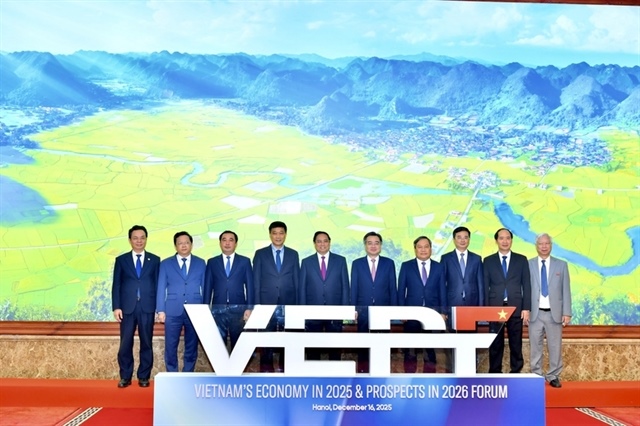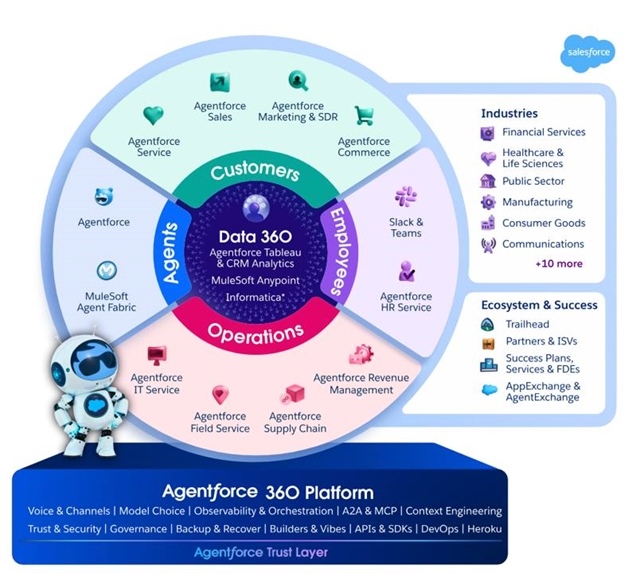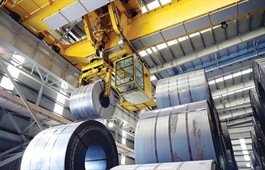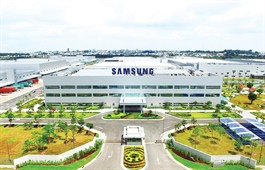Investing channels evolve amid global realignment
Investing channels evolve amid global realignment
As global trade dynamics shift and financial markets brace for new developments, Trinh Ha, senior analyst at Exness Investment Bank, talked with VIR’s Thy Nguyet about Vietnam’s positioning in global supply chains, the evolving landscape of its capital markets, and the outlook for safe-haven assets like gold.
How do you assess the long-term impact of the ongoing US tariff situation on global trade and supply chains?
The goal of the US currently is to reduce reliance on external supply sources in strategic sectors, enhancing domestic self-sufficiency.

Trinh Ha, senior analyst at Exness Investment Bank |
However, the structure of the US economy has shifted significantly towards a consumer-driven model. In this context, tariff measures serve not only to protect certain domestic industries but also to incentivise reshoring of production capacities back to American soil.
Additionally, the US’ broader economic agenda, including corporate tax cuts and other stimulus measures, requires substantial fiscal resources. Tariffs, in this sense, provide an important revenue stream to support government spending and budgetary efficiency reforms. It is likely that maintaining a certain level of tariffs will remain part of the administration’s fiscal strategy.
Despite these policy dynamics, it is important to recognise that global supply chains are fundamentally built on the principle of advantage, where each country focuses on industries where it is most competitive, optimising production costs and delivering mutual benefits to global markets. Each economy offers different conditions to minimise production opportunity costs.
Ultimately, while trade tensions may continue in the near term, global supply chains will likely recalibrate towards efficiency. Over time, these disputes are expected to subside, with supply chains returning to align with economic logic and cost optimisation.
How should Vietnam position itself to maintain its role in the global value chain, and what strategies could be considered to enhance bilateral and multilateral trade relations in a balanced and sustainable way?
Vietnam is steadily affirming its position as a vital link in the global value chain, leveraging key competitive advantages such as its strategic geographical location, stable political environment, and a young, skilled, and cost-effective workforce.
Over recent years, global supply chain realignments have created significant opportunities for emerging economies. In this context, Vietnam has successfully positioned itself as a preferred destination for industries with high value-added potential, particularly in the fields of technology manufacturing, electronics, and semiconductors.
With supply chains in constant flux, the challenge for Vietnam is not merely to seize the moment, but to cement its role as an indispensable part of these global networks. This involves maintaining macroeconomic and political stability, enhancing production capabilities, and ensuring compliance with international standards, especially regarding the transparency and traceability of product origins. These elements are critical for fostering trust with global partners and mitigating risks from trade defence measures.
In terms of strengthening bilateral and multilateral trade relations, Vietnam can consider several strategic initiatives. Firstly, tightening oversight over strategic sectors such as rare earths, a vital component for high-tech manufacturing that can reinforce the country’s importance in global supply chains. As competition intensifies for these critical resources, Vietnam’s management and regulatory framework in this area could prove to be a strategic advantage.
Furthermore, Vietnam needs to showcase its proactive role in global value chains through initiatives aligned with global trends, such as green manufacturing, digital transformation, and technological upgrades. These initiatives not only enhance Vietnam’s competitiveness but also resonate with global investors seeking sustainable and forward-looking partners.
From a bilateral trade perspective, particularly with the United States, Vietnam could pursue a more balanced trade relationship. This may include reducing import export barriers, reviewing tariff structures on key imports from the US and diversifying Vietnam’s import portfolio with high-value products such as liquefied natural gas, aircraft, and defence equipment.
With the upcoming implementation of the KRX trading system, potential market reclassification, and outcomes of international tariff negotiations, how do you assess the outlook for Vietnam’s stock market?
Vietnam’s stock market stands at a pivotal juncture, poised for significant improvement in both operational quality and its ability to attract international capital.
A key development driving this optimism is the planned implementation of the KRX trading system. Scheduled for May 5, this state-of-the-art platform is designed to meet international standards, addressing long-standing technical issues. Additionally, the system opens the door for new derivative products, which will diversify investment tools and enhance market liquidity.
This infrastructure upgrade is a critical step towards reclassifying Vietnam’s market status from frontier to emerging, as assessed by global index providers. A market upgrade would not only improve Vietnam’s visibility on the global investment map but also attract a new wave of institutional investors, particularly exchange-traded funds managing substantial capital. This could result in a stable, long-term inflow of foreign capital, providing significant support to market liquidity and investor confidence.
In recent periods, foreign capital has shown a cautious outflow due to global macroeconomic uncertainties, geopolitical tensions, and unpredictable trade negotiations. However, the combination of a market upgrade, improved infrastructure, and enhanced regulatory frameworks could reverse this trend, engaging foreign investors and positioning Vietnam’s market for sustained growth.
As foreign funds return, capital allocation is expected to concentrate on sectors with significant weight in the VN-Index, notably banking, securities, real estate, and import-export industries. These sectors are relatively insulated from tariff-related fluctuations and are positioned to benefit from Vietnam’s economic recovery and expanding trade flows. Moreover, their large market capitalisation makes them attractive targets for foreign investors seeking exposure to Vietnam’s growth story.
Nevertheless, while internal factors such as infrastructure enhancements and potential market reclassification offer reasons for optimism, external variables such as global interest rate movements, monetary policies, and geopolitical tensions that remain influential. These factors could affect capital flows and investor sentiment. Therefore, while the outlook is positive, a degree of caution remains warranted as Vietnam’s stock market continues to navigate the interplay of domestic reforms and global conditions.
Given that gold prices have reached historic highs, how do you view the long-term outlook for gold – will it remain an attractive investment, or likely to face significant corrections?
Gold has demonstrated remarkable resilience in recent months, climbing to record highs and reaffirming its role as a safe-haven asset amid global economic and geopolitical uncertainties. The surge reflects the confluence of factors driving investor interest in the metal.
According to recent insights from the World Gold Council, gold’s price rally has been propelled by two primary forces: the declining opportunity cost of holding non-yielding assets, as global interest rates stabilise or fall, and rising demand from financial institutions and central banks, especially in Asia. Central banks have been steadily increasing their gold reserves, viewing it as a critical hedge against market volatility and currency risk.
Moreover, concerns over stagflation, a scenario characterised by persistent inflation and sluggish economic growth that have further amplified gold’s appeal. Investors, wary of traditional asset classes, have turned to gold as a means of preserving value in uncertain times. As these concerns persist, gold is likely to remain well-supported in the medium term.
That said, the rapid ascent of gold prices in a relatively short period suggests the potential for technical corrections. Markets typically undergo adjustments to rebalance supply and demand dynamics, especially after sharp rallies. Therefore, while the broader outlook remains positive, short-term volatility cannot be ruled out.
In the event of a robust global economic recovery, accompanied by rising real interest rates, gold’s appeal as a safe-haven asset could diminish, leading to price corrections. Nevertheless, over the long term, gold continues to serve as an effective hedge against geopolitical risks and macroeconomic instability. The sustained buying from central banks further supports its long-term value proposition.
While gold may experience short-term corrections after its recent surge, it remains an attractive long-term investment for wealth preservation and risk management. Its enduring appeal amid market uncertainty underscores its role as a foundational element in diversified investment portfolios.
- 15:54 06/05/2025



























